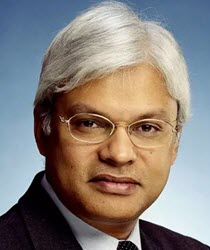China’s Vision to Shape the Indo-Pacific Region
Ambitions and Constraints
Dan Aum interviews Ashley J. Tellis, Alison Szalwinski, and Michael Wills, co-editors of Strategic Asia 2019: China’s Expanding Strategic Ambitions, the latest volume in the Strategic Asia series. They discuss how China seeks to reshape the international system to serve its strategic aims, regional actors and the variables they present to China’s rise, and policy options for the United States and its partners to address the challenges posed by a rising China.
Ashley J. Tellis is a Counselor at NBR. He holds the Tata Chair for Strategic Affairs and is a Senior Fellow at the Carnegie Endowment for International Peace. He has served as the Research Director of the Strategic Asia Program at NBR and a co-editor of the program’s annual volume since 2004.
Alison Szalwinski is Senior Director of Political and Security Affairs at NBR.
Michael Wills is the Executive Vice President at NBR.
Time Stamps
Q1 [3:20]: Why does this year’s volume of Strategic Asia start from China’s perspective and look outward?
Q2 [4:20]: How did we get to this point in China’s rise in 2019?
Q3 [5:31]: What is China’s strategic ambition now?
Q4 [6:47]: What grade would you give them?
Q5 [8:14]: How does the Belt and Road fit into all of this?
Q6 [13:00]: Are there any constraints to China achieving its strategic ambitions?
Q7 [17:10]: How has its approach to managing relations with Taiwan changed?
Q8 [19:55]: How is President Tsai’s position toward China different from President Ma?
Q9 [24:14]: How does the Korean Peninsula and Japan fit into China’s grand strategy for the region?
Q10 [29:00]: What options do alliance partners like Korea and Japan have to not need to pick between working with China or the United States?
Q11 [32:45]: How do Southeast Asian nations fit within China’s grand strategy?
Q12 [38:25]: How do South Asia and the Indian Ocean relate to China’s vision in the next 20–25 years?
Q13 [42:00]: How would you assess the current state of Sino-Russian relations and how does Russia fit within China’s greater strategy?
Q14 [44:38]: Given the enormity of the challenge, how should the United States respond? What are the first key strategic steps that U.S. policymakers should take?
Q15 [47:50]: What are core American strengths that are being underutilized?
Q16 [55:23]: In the absence of American leadership, who could fill this role?
Q17: [1:00:44]: If we look ahead six months to a year, what are some milestones that indicate to you that the United States is on the right track?
Q18 [1:07:04]: Do you have any final thoughts for our listeners on how the United States could best manage its competition with China going forward?
About Asia Insight
The NBR podcast series Asia Insight features interviews with top Asia experts about key issues affecting the Indo-Pacific region, with a focus on implications for U.S. policy and businesses. Subscribe to Asia Insight on Apple Podcasts and let us know what you think of the podcast on Twitter.
Media Contact: Dan Aum, [email protected] or (202) 347-9767.
Asia Insight theme music is by Laura Schwartz of Bellwether Bayou.






